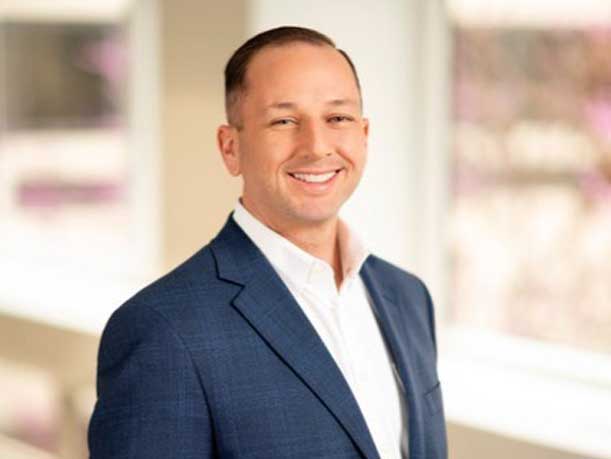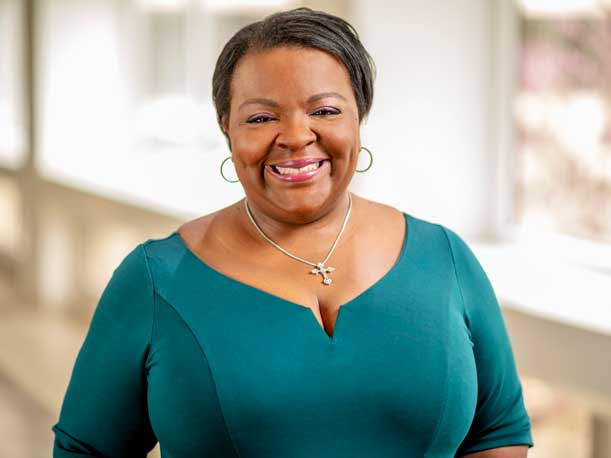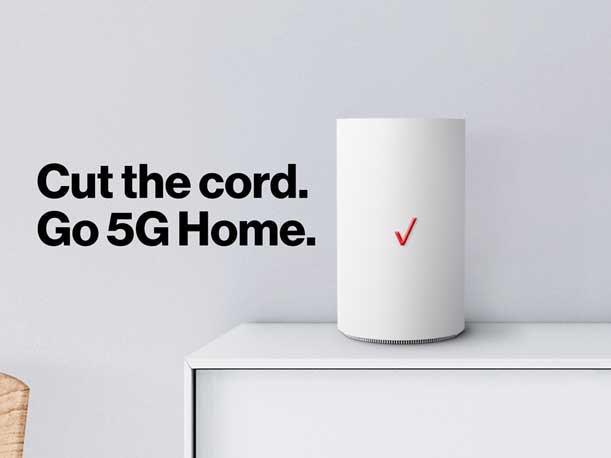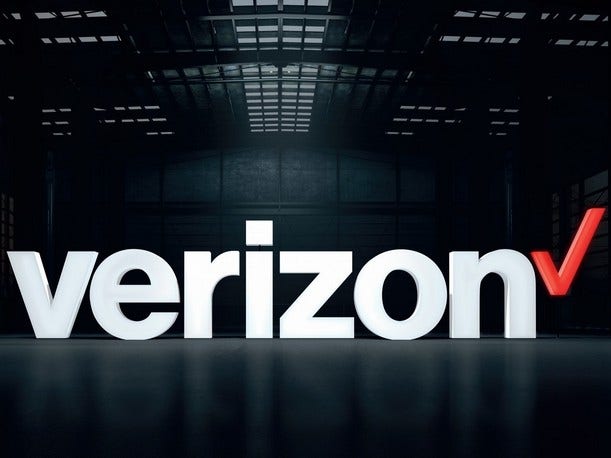Verizon’s New Channel Chief On Evolving The Program And ‘Pulling Together As One Channel’
‘Historically, I think partners may have felt that Verizon comes out with a model, and you played within that model. Whereas tomorrow, we are all about true partnership, listening to what the partners need … we’re looking to continue to take that to the next level because that feedback is critical to our continued success together,’ Verizon’s new channel chief Mark Tina tells CRN.

Mark Tina, Verizon’s channel chief and vice president of indirect partner sales who took the job in August, has filled his time with conversations with solution providers about what should come next.
The first request on the list? Simplifying the partnership process. Tina and his team are working to move all the pieces of channel – the various programs and partner types -- under his control so that Verizon’s entire indirect channel is in one place for the first time. From there, Tina has plans to modernize and make the changes necessary to partner compensation to be more in line with how solution providers want to be paid.
And that’s just the work he’s been doing in his first 90 days. Tina believes that opportunities abound in areas such as 5G, managed and professional services for future-minded channel partners and those looking for new ways to generate recurring revenue, and he wants to help partners go after these new and different monthly recurring products and solutions.
In a recent interview with CRN, Tina talked about Verizon’s relationship to its partners, where solution providers should be placing their bets right now and the renewed focus on verticalization, and the path forward for 2024.
Here’s what Tina had to say.

Tell us about your new channel chief role and the changes you’ve been making in your first 90 days.
So, [my] role is the first time Verizon has really brought together a lot of the different pieces of the channel. Verizon has obviously been doing channel for a long time, but different pieces of it were under different parts of the organization. So for example, business agents and our co-sell partners were under one of our vice presidents and then our alternate channel distribution, things like outbound telemarketing and agents were under another, so really pulling the channel together [and] identifying the leaders of each channel segment. We’ve hired some new leaders in the channel to help provide more resources for better partnership opportunities within the channel [and] better outcomes for our customers. I’ve been in the role for 90 days and really, the focus has been pulling together as one channel, getting leaders in place, aligning on the strategy, and also meeting with channel partners. Over the last 90 days, there has not been a single week that I have not been on an airplane. I have been out there meeting with partners across the ecosystem. It seems to be event season. Everybody’s having their forums and their annual meetings and things of that nature. Those are great because I get to meet a large volume of partners in one event and I’ve also been having one-off meetings with partners at their headquarters and we’ve had partners come into our headquarters. So, it’s been really about aligning on the path forward for 2024.
[The one single channel program,] that’s where we are. Wendy [Taccetta (pictured), Verizon’s previous channel chief] did a lot of great work in that category and it’s exactly what she was trying to accomplish. And what happened was with [Taccetta] moving into her new role [as SVP, Retail and Partner Management], which is a big role over on the consumer side now, that allowed me to step into my new role. But here’s what’s different: channel chief was held by [Taccetta] and she did a lot of great work. But all of the different programs did not necessarily report into her specifically. It was a bit spread out. So, it’s taking what [Taccetta] started and kind of evolving into that next portion of what we’re doing.

What has Verizon done to simplify and make the partnership process easier for the channel?
That’s a great question and that really is the center of what we’re focused on, which is listening. It’s gaining feedback from the partner community to figure out where we can improve and enhance how we’re coming to market collectively. [We do] an annual survey where we get feedback from our partners on exactly what things need to be improved. We also have formed what we call our PAC, our Partner Advisory Council, and we’ve got those specific to the different programs, mobility, co-sell business agents, alternate channel distribution, etc. I think one of the coolest things is we actually let specific partners nominate within themselves to be chair of the committee for that particular year. And so, we gain a lot of feedback through the PAC forums, again, through the survey processes, and then just through our regular interactions with partners. A lot of that feedback that has come back is yes, ease of doing business and simplicity. So, how do we make the systems that we interact in easier? And what we’ve done theirs is a lot of work with our [Global Technology Solutions] GTS teams to allow for different types of API integration between us and our partners. We’ve worked on removing some of the complexity. Another thing outside of systems is compensation. Partners always want to know where are we at with compensation today? Where is it evolving? And where are we going? Again, we gain feedback from those partners into the things that are working and what are the things that are not and where we’ve already begun to communicate and continue to work to stand up compensation for 2024 and beyond. Because we know the success of the channel is when we all win. And when I say we all win, it means we want our partners to grow, we want our partners to be able to increase their revenue streams and to grow within their own respective businesses. Obviously, on our end, we want Verizon to be able to grow connections, revenue, etc., through expanded distribution. And then of course, we want our customers to win in the end by taking advantage of world-class solutions. So, those are some of the improvements we have made, again in systems and compensation, but really it all comes down to Verizon spending more time than ever before listening to our partners, gaining their feedback to be able to come to market in the best way possible.
Every partner we talk to is interested in building different types of recurring revenue streams, so the way Verizon works, obviously, as the network provider, that recurring revenue is there each month depending on what monthly rate plan that customer has for our voice, data, and other connectivity services. The partners, in some cases, were receiving maybe a one-time payment to get that customer stood up. This is where we’re working with them in order to package more on managed services[and] professional services, where they stay engaged with the customer and Verizon throughout the lifecycle of the solution. And there are different monthly recurring products and solutions that they can now sell. And we’ve made it really easy for them, because what can happen is the customer can obviously transact with them directly in certain cases. But then they can also purchase through what we call our Business Solution store, where we have products skewed, which are very simple for our salespeople and other indirect partners to sell. And then we also have what’s called BoBo -- bill on behalf of -- where that customer service can actually be billed on Verizon paper. And again, we’re looking at ways to do that with recurring revenue streams and not just one time, transactional payouts.

Where should partners be placing their bets?
I think verticalization has become more important than ever. And it’s interesting: about, I would say, 12 years ago in my career, I actually led a team of what we called vertical account managers, where we were building vertical expertise. We had an insurance vertical, we had a professional services vertical, we had a construction vertical, and several others and it really showed how valuable vertical expertise can be. I think we’re in a place where it’s become more important than ever. And so I think having a verticalized approach, matched up with a product approach, is where these partners are finding a lot of success. So for example, quick-serve restaurants and other type franchises would be a good vertical, where these business customers truly need connectivity, both primary and backup, they need security to keep the transfer of information secure. And then they help with things like cold chain management, and depending on the type of business they are. So, Verizon is there for the connectivity and for a lot of the core pieces. But then our partners come over the top with a verticalized packaged, bundled solution that can meet all of the needs of that quick-serve restaurant. That’s just an example of where a partner that’s coming to the table can create a holistic solution for a specific vertical with the specific product set really comes together.

How big is the 5G opportunity right now?
This is where things get exciting. I think for a long time we’ve heard about wireline and wireless converging. But I do think cellular connectivity, in the form of say, internet, was always viewed as backup. Yeah, you can use cellular connectivity to back up your primary wireline connection. But with 5G fixed wireless access, which is literally one of our top priorities, that connection can now be used as a primary. It can be used as a backup. It can be used as what we call a parallel network. So, let’s say a business is using a wireline fiber connection for its main infrastructure. But then they want to stand up a point of sale network or guest Wi-Fi network, they can use fixed wireless access for that. So, what 5G does is it allows our partners within the channel to really diversify how they are connecting customers to their most valued information. That to me becomes the core basis of the relationship -- the connectivity. And then from there, we’re focused on above the network services. You’ll hear us talk about network as a service, where on top of that connectivity layer, how do we layer in the different types of software services, the different types of security services and collaboration services that help that business to run and differentiate themselves within their respective industry. So, 5G really truly accelerates all of that. We’re in a point in time right now where these business customers are processing more data than ever before and they are in need of connectivity wherever and whenever they need it. 5G allows for the throughput that’s necessary. It has the low latency that’s necessary, depending on the application. And because of the way we’re deploying it, it is that ubiquitous, high-speed connection coast-to-coast. I look at 5G as now in line with what we’re doing from the fiber wireline perspective to help diversify how we deliver connectivity to our customers.

What’s the biggest challenges facing partners today?
A lot of our partners are actually small-medium businesses if you really take a look, and of course we’ve got very large system integrators -- Fortune 500 partners. But a lot of the partners we work with and some of the programs, like our co-sell and VARs and business agents, are essentially small-medium business customers. They face a lot of the challenges that we’re trying to solve for our end customers, whether it is resource utilization and deployment or [maybe] they want to come to market and expand, but need resources to be able to do that. So, I think that helping them through that lens, helping them to expand, helping them to grow their business, helping them to understand that together, we can create what I call force multiplication, is how we can win together. I’ll give you a very specific example of that. We’ve got direct sales teams across the nation, so when those thousands of Verizon sellers are throughout the country, selling to customers each and every day, they can bring partners into the sale with them in a sell-with motion. From a partner perspective, where they’re looking to expand and grow and do so in a meaningful way, in a lot of cases, they gain access to our direct sales organization and they get access to more customers, more opportunities, more lead referral, and true business development and generation.
The other thing I think that they need help with is understanding the power of being on the Verizon network. Obviously, our network is recognized not only for its reliability, but for our innovation and what we’re doing there and so they need, again, as a SMB, in many cases, reliable brands to come to market with. Verizon is a well-known brand in the industry that we look to leverage together with our partners.

What can partners expect from the Verizon partner program heading into 2024?
If I was to narrow it down, I would say number one, we are looking to expand our distribution through this partner network and that distribution comes in a couple of forms. Number one, geographic distribution. Where can we enable partners to help us get into parts of the economy that we are not effectively selling to in our direct motions today, or through our digital motions today? We’re going to look to expand distribution geographically. We’re going to look to expand distribution from a product lens as well. For example, [plain old telephone service] POTS replacement is a very, very hot area in our industry where we’ve got legacy copper lines that are being retired that at some point need to be upgraded to current day fiber technology. We know that our partners have great solutions. They’ve got great expertise and experience in doing POTS replacement. And so we look to expand our POTS replacement offerings throughout the nation. [Reaching more] customers, again, in a product motion through things like POTS replacement, managed services and professional services. I think our partners should look for Verizon to really leverage the channel more than ever before to bring those end-to-end solutions to our base.
I think that they should also look forward to and I think they’ve already seen this, Verizon listening to their feedback in order to co-develop and work together. Historically, I think partners may have felt that Verizon comes out with a model, and you played within that model. Whereas tomorrow, we are all about true partnership, listening to what the partners need, which is what [Taccetta] again started, which we’re looking to continue to take to the next level because that feedback is critical to our continued success together. We want our partners to grow and to win, and so being able to create monthly recurring revenue models with them is something else that we’re focused on in order to keep them engaged with the customer for the full lifecycle.